The shift from 2012 : Trump makes huge gains in rural America. Clinton makes modest gains in the metros, Utah pic.twitter.com/5C12ylrlB9
— Nate Cohn (@Nate_Cohn) November 9, 2016
Dems need to grapple with the fact that they lost this election because voters who supported Obama in 2012 voted Trump.
— Nate Cohn (@Nate_Cohn) November 10, 2016
Turnout can always be better. But turnout in FL/PA was very strong--higher than '12--and Clinton lost because Obama voters flipped.
— Nate Cohn (@Nate_Cohn) November 10, 2016
Was there a hidden Donald Trump vote? I thought so on Election Night given the historic wins Trump had in Michigan, Wisconsin, and Pennsylvania. He lost Minnesota by 1.4 points to Clinton, which is astounding. But then there’s the other side of the equation: Clinton’s people just stayed home. And they did. Granted, it’s not really a criticism of the Trump campaign. He seems to have energized the people who failed to show up for Mitt Romney in 2012. Another thing that adds to the narrative that Clinton’s people stayed home is the fact that Trump got 58 percent of the white vote this cycle; Romney got 59 percent. So, was there a shy Trumpkin vote? Yes, but it was too small to impact the election, which would’ve been interesting, though what happened is much more satisfying to Republicans: white working class voters (who have trended GOP) had their revenge, Clinton couldn’t match Obama’s turnout levels in key counties since his own supporters turned on him, along with thousands of other Democrats crossing party lines to vote for their champion: Donald Trump.
It’s not sexism. It’s not misogyny. It’s that Hillary Clinton was a terrible candidate and the Democratic Party turned their backs on rural America. That was the fatal mistake—and there’s really no excuse. The Democratic National Committee’s 2014 autopsy, where the GOP trounced them in the midterms, clearly stated that they needed to reconnect with white working class voters, though their attention was to the South. In reality, it was pretty much every rural space of the country. They opted to try and reengage the Obama coalition for a third time and failed. An example of where Democratic turnout was depressed was in Michigan’s Wayne County, which encompasses Detroit. It’s the largest county in the state. In 2012, Obama got 595,253 votes, winning it by 73 percent. In 2016, Clinton still won the county, but by a slimmer 66 percent margin and only 517,022 votes. Here, and CNN’s John King made the same observation, is where you can say that Democrats stayed home. And that drop is what’s going to cost her the state.
It's tempting for the losers to attribute the shift entirely to racism. But somehow Obama sold them & Clinton did not.
— Nick Confessore (@nickconfessore) November 10, 2016
In Pennsylvania, Obama won Philadelphia County with 85/14 over Romney, earning 557,024 votes. Clinton won it, but again, with slimmer margins, 82/15 over Trump. In neighboring Delaware County, it went for Obama 60/38 over Romney in 2012; it went for Clinton 59/37 this year. In Bucks County, Obama won it 50/48 over Romney; this year Clinton barely won it 48/47. That one-to-two point drop in the key counties make the difference, which was why Trump was able to put the Keystone State in the GOP column for the first time since 1988, 48/47 on Election Night. On the Senate front, Pat Toomey can thank Bucks County again for creating his path to victory. In 2010, it was key to his win over then-Rep. Joe Sestak. In 2016, he reclaimed it again over Democrat Katie McGinty 51/46.
Hillary Clinton may have won working class voters in 2008 during the Democratic primaries, but then the alleged unethical dealings of her nonprofit became front-and-center, as did her unauthorized and unsecure private email server. The scores of paid speeches she delivered, which earned her hundreds of thousands of dollars eroded that working class hero image, especially when you figure that one speech earned her more money than most Americans make in their lifetimes. She was a horrible candidate, but wasn’t Trump? Yes, he’s unpopular, he’s flawed, but he resonated with these folks in a way that was probably years in the making.
In 2014, after the Democratic shellacking in the midterms, Obama pollster and Clinton strategist Joel Benenson said that winning the white vote, the male vote, and the white male vote wasn’t important. What Benenson and his cadre of Democratic operatives now seem to have missed is that white voters do count, and that the white working class vote was actually the linchpin of the entire Obama coalition. Moreover, significant shares of 2012 Obama supporters decided to jump ship and support Trump. Nicholas Confessore and Nate Cohn wrote about this middle class, white, and rural uprising that decimated liberal America:
Recommended
Mr. Trump’s coalition comprised not just staunchly conservative Republicans in the South and West. They were joined by millions of voters in the onetime heartlands of 20th-century liberal populism — the Upper and Lower Midwest — where white Americans without a college degree voted decisively to reject the more diverse, educated and cosmopolitan Democratic Party of the 21st century, making Republicans the country’s dominant political party at every level of government.[…]
Mr. Trump also won over millions of voters who had once flocked to President Obama’s promise of hope and change, and who on Tuesday saw in Mr. Trump their best chance to dampen the most painful blows of globalization and trade, to fight special interests, and to be heard and protected. Twelve percent of Mr. Trump’s supporters approved of Mr. Obama, according to the exit polls.
[…]
Mr. Trump won low-income white voters to the Republican ticket, reversing a partisan divide along class lines that is as old as the Democratic and Republican Parties — a replay of the “Brexit” vote in June, when the old bastions of England’s Labor-left voted decisively to leave the European Union. His breakthrough among white working-class voters in the North not only erased the Democratic advantage but reversed it, giving him a victory in the Electoral College while he lost the national popular vote.
Most strikingly, Mr. Trump won his biggest margins among middle-income white voters, according to exit polls, a revolt not only of the white working class but of the country’s vast white middle class. He did better than past Republicans in the sprawling suburbs along Florida’s central coasts, overwhelming Mrs. Clinton’s gains among Hispanic voters. He held down Mrs. Clinton’s margins in the Philadelphia suburbs, defying expectations that Mrs. Clinton would outperform Mr. Obama by a wide margin.
[…]
Starting Wednesday, you could walk from the Vermont border through Appalachian coal country to the outskirts of St. Louis without crossing a county Mr. Trump did not win decisively. You could head south through rural and suburban Georgia all the way to South Florida, or northwest through the Upper Midwest, or make a beeline for the West Coast, skirting only the rising Democratic communities of Colorado and the booming multicultural sprawl of Las Vegas before finally reaching Mrs. Clinton’s part of the country.
Clinton suffered her biggest losses in the places where Obama was strongest among white voters. It's not a simple racism story
— Nate Cohn (@Nate_Cohn) November 9, 2016
I'm not saying it's irrelevant, but this election was decided by people who voted for Obama in 2012, and should figure into the analysis
— Nate Cohn (@Nate_Cohn) November 9, 2016
The shift in white America between 2004 and 2012, and 2012 to 2016 pic.twitter.com/v7wPD2hZF2
— Nate Cohn (@Nate_Cohn) November 10, 2016
Confessore and Cohn added that the surge of black, Hispanic, and nonwhite voters turned off by Trump’s rhetoric never materialized, as the billionaire fared no worse than Romney in 2012, but he did run up the margins big league in these rural counties. There was the fear - that while Trump was dominating white working class voters at historic levels, his path to victory could be blocked by Clinton’s winning margins with college-educated women.
Cohn actually sounded the alarm bells with Trump’s advantage with this group on November 6, noting that his level of white working class support was enough to erase the Democratic advantages with Hispanics and college-educated whites:
In recent national surveys, Mr. Trump leads Hillary Clinton by 59 percent to 30 percent among that group. It’s larger than the 57-35 lead that Mitt Romney had with those voters in the final polls in 2012.On their own, Mr. Trump’s gains among this group have been enough to cancel out four years of favorable demographic shifts for Democrats among Hispanic and well-educated white voters.
[…]
Mr. Trump’s strength among the white working class gives him a real chance at victory, a possibility that many discounted as recently as the summer. He could win enough Electoral College votes without winning the popular vote, through narrow victories in Midwestern and Northeastern battlegrounds like Wisconsin and New Hampshire, where Democrats depend on support among white working-class voters. Mr. Trump’s strength with that group could even be enough for him to win Florida, where Mrs. Clinton’s abundant support among Hispanic voters would otherwise all but doom a Republican.
Okay—so who the hell are these people? Well, they’re folks that Democrats have come to hate. They’re rural. They’re less educated. They don’t speak with learned diction. And they don’t live in places that matter, like the sprawling urban areas, the cities. They’re the people that Trump refers to as the forgotten Americans, who have been left to fend from themselves due to perceived threats from free trade, immigration, and rampant drug usage. The people that Washington, liberals, or progressives don’t care about—and they don’t. ProPublica’s Alec MacGillis ventured into these areas, criss-crossing the Rust Belt and observed a few things: a) A lot of first time voters were breaking for Trump—and when I say first time, I mean after over two decades of voter eligibility; b). They didn’t care about Trump’s taxes, it was legal, and it was a loophole designed by the system. They would exploit it too if they had the means; c) Trump’s remarks about women mostly seem to be a problem with urban-based liberals and not these folks, who often make jokes about it themselves; d) the Republican attacks on Clinton regarding emails and Benghazi were resonating with voters here; and d) MacGillis thought it was a bit shocking that he had trouble finding Clinton supporters in his travels.
Tracie St. Martin stepped out onto the porch, a 54-year-old woman with a sturdy, thick-muscled build and sun-weathered face, both of them products of her 26 years as a heavy-construction worker. St. Martin greeted the women warmly, and when they told her what they were there for she said, sure, she was considering Trump — even though she usually voted Democratic. And when they got talking, in the disjointed way of canvassers making a quick pitch, about how Trump was going to bring back the good jobs, St. Martin was visibly affected. She interrupted them, wanting to tell them about how she had, not long ago, worked a job that consisted of demolishing a big local GM plant. Her eyes welled up as she told the story and she had trouble continuing.[…]
…St. Martin was leaning toward Trump.
Her explanation for this was halting but vehement, spoken with pauses and in bursts. She was disappointed in Obama after having voted for him. “I don’t like the Obama persona, his public appearance and demeanor,” she said. “I wanted people like me to be cared about. People don’t realize there’s nothing without a blue-collar worker.” She regretted that she did not have a deeper grasp of public affairs. “No one that’s voting knows all the facts,” she said. “It’s a shame. They keep us so fucking busy and poor that we don’t have the time.”
[…]
Just last week, I [MacGillis] was back in Ohio, in the southeastern Appalachian corner. I was at a graduation ceremony for opiate addicts who had gone through a recovery program, and sitting with four women, all around 30, who were still in the program. Someone mentioned the election, and all four of them piped up that they were voting for the first time ever. For whom? I asked. They looked at me as if I had asked the dumbest question in the world. All four were for Trump.
The most of the loquacious of the group, Tiffany Chesser, said she was voting for him because her boyfriend worked at a General Electric light-bulb plant nearby that was seeing more of its production lines being moved to Mexico. She saw voting for Trump as a straightforward transaction to save his job. “If he loses that job we’re screwed — I’ll lose my house,” she said. “There used to be a full parking lot there — now you go by, there are just three trucks in the lot.”
But Chesser also was viscerally opposed to Clinton who, the week prior, had endured a surprise announcement from FBI Director James Comey that a newly discovered cache of emails of hers was under scrutiny. “If she’s being investigated by the FBI, there’s a reason for it,” she said. I asked the women if they weren’t equally bothered by the many women’s accusations against Trump. They shrugged. “It’s locker-room talk,” Chesser said. “I know girls talk like that, and I know guys do.”
[…]
A week later, on Election Day, I drove to a polling station in Shrewsbury, Pennsylvania, a small town south of York, just across the Maryland line. The polling station was inside an evangelical church housed inside a vast, mostly abandoned shopping plaza. It’s Republican country, where Romney outpolled Obama 2–1, but I was still startled by how long it was taking me to find a single Hillary Clinton voter.
But there was yet another woman voting for the first time in her life, at age 55, for Trump. “I didn’t have much interest in politics. But the older you get you realize more and more how important it is,” said Kelly Waldemire, who works in a local plastic-molding plant. “When it got to the point where the country is going in the wrong direction, I thought it was time.”
[…]
As I was preparing to leave, I glimpsed a young woman who I guessed might’ve voted for Clinton, and approached her to help balance my reporting. I was wrong. Stephanie Armetta, an 18-year-old working as a grocery store cashier before heading to community college, had cast her first-ever ballot, for Donald Trump. Her family had many members in the military, she said, and she thought Trump would “have more respect” for them. She thought it was wrong that if her brother got deployed, he got only two meals per day, while people in prison get three. And then of course there was Benghazi, “that she left [the four Americans] there, that they weren’t her priority.” She was bothered by Trump’s comments on the tape, for sure. But, she said, “I’m glad how he didn’t lie about it. They caught him and he said, yeah, I said an asshole thing.” Not to mention, she said, “Bill Clinton isn’t good either on that subject.” Her vote, she concluded, was “more against Hillary than for Trump.”
MacGillis added that there was also Contessa Hammel, 43, who said she was going to vote for the first time ever—and it was for Donald Trump.
“He makes it simple for people like me. He puts it clearly,” she said. This adds to the notion of what many of you were saying all along; that the data, while important, was off because people, like Hammel, weren’t being counted. In fact, Cohn mentioned that the polling this cycle oversampled the well educated and the nonwhite, both groups that break for Democrats. Others noted that GOP registration was up throughout the cycle, but noted that perhaps it was voters who were Democrats, but have voted Republican in recent cycles, which undercut the narrative that Trump was courting a new legion of voters. Hammel seems to be one of the people that pollsters and pundits overlooked. So, let’s revisit this hidden Trump vote. Again, it’s hard to say that there was such a vote, given the fact that Trump got fewer votes than Romney, but slightly more than McCain, and that the 2016 electorate was pretty much a mirror image of 2012. Yet, there are people like Hammel, who have stayed clear of politics for 25 years until now. Cohn was also skeptical of the “missing white vote,” which he said skewed Democratic. Yet, after the election, he also said that maybe there were silent voters for Trump, though the Morning Consult said that there weren’t enough of them to swing the election. But does that matter? Remember we’re talking about an electorate that was 70 percent majority white this year. Real Clear Politics’ Sean Trende noted in 2013, that with a demographic that large and that overwhelmingly in national elections, it’s not hard to see tremendous changes if new legions of voters come out of the caves, or a large share of voters flip their support, to win an election. That appears to be what happened here, as post-2012 data crunchers underestimated the white working class vote by 10 million people.


That’s quite an overshoot. Trende also delved into the Romney factor in 2012, where the share of the white electorate fell by two points (74-72). The simple fact is that Romney looked like the guy who fired you and Obama was too liberal. He said that 2012 was possibly the first time in 100 years that white working class voters had no natural home in either the Democratic or Republican parties. Moreover, where 2012 turnout was down was in counties that dotted the Rust Belt and stretched in a diagonal direction from upstate New York to New Mexico. These counties are where Trump drove up the margins on Hillary.
Trende mentioned that for lack of a better term, this is Ross Perot country. Perot wasn’t a rigid social conservative. He was an economic populist who resonated in the counties that Trump won decisively. Still, the white share of the electorate was still 70 percent. It dropped another two points from last year, but Trump’s populist message resonated, where Romney’s fell flat. Factor in the Obama supporters who defected to Trump, plus Hillary’s lackadaisical turnout on her own side and there’s your victory. Cohn added:

In this election, the polls will not end up being off by very much nationally. Indeed, Mrs. Clinton will almost certainly carry the popular vote — perhaps by more than one percentage point. The national polls gave Mrs. Clinton a four-point lead in the final stretch; the final New York Times/CBS News poll had Mrs. Clinton up by three.Taken in totality, Mrs. Clinton probably did win Hispanic voters by a big margin, as pre-election polls predicted. She probably did make big gains among white voters with a college degree — though it’s unclear whether she won them.
But the polls were wrong about one big thing: They missed Mrs. Clinton’s margin in the Midwestern and Rust Belt states, like Wisconsin, Michigan and Pennsylvania.
The exact mechanism for the error is unclear. Perhaps undecided voters broke for Mr. Trump; maybe there really were “silent” voters for him, people who were reluctant to tell pollsters that they backed him. Perhaps it took a lot breaking Mr. Trump’s way: Maybe Republican voters came home to the party over the last week in well-educated suburbs, while undecided white working-class voters broke for Mr. Trump.
[...]
In the end, many of the factors that made Mrs. Clinton appear favored to win in these states simply weren’t there. She didn’t win heavily Hispanic counties in Florida by the wide margins that many expected — only slightly outperforming Mr. Obama in Miami-Dade County and the Orlando-Kissimmee area, even as she outperformed in Texas and California. And she didn’t overperform in the Philadelphia area, even as she posted huge margins in the Chicago area and Seattle.
Whatever gains she made among well-educated and Hispanic voters nationwide either didn’t occur to the same extent in the key battlegrounds, or were overwhelmed by Mr. Trump’s huge appeal to white voters without a degree.
After the 2014 midterms, I wrote about who stands up for middle/working class America. It was a reaction to when I quietly entered the left wing Netroots Nation event in Detroit, Michigan, where many there took pride in seeing themselves as middle/working class warriors. Exit polls from the 2014 races showed the GOP either competitive or winning the very folks these Democrats say they’re champions for, but privately trash as country bumpkins behind closed doors. Now, we see CNN’s Van Jones, who called 2016 a “whitelash election,” saying that Democrats need to learn how to speak to white men again. Yet, I feel that, or at least so far, the Democrats had thought their white working class woes were solely centered on the South. It’s not. And even the liberal New Republic wrote in 2014, the perils of that mindset, along with the notion that Democrats don’t need to white working class to win. They very much do.
Many Democrats would prefer not to have to face this monumental organization challenge, hoping instead that the existing Obama coalition and demographic changes in America will prove sufficient to elect a president in 2016, hold the Senate, and weaken GOP control over the House of Representatives. But the harsh reality for Democrats is that they cannot achieve all three of these objectives without increasing their support among white working class Americans—and if Democrats keep telling themselves that "the problem is just the South," that support may decrease instead.
Guess what? That’s exactly what happened Tuesday night. Republicans became the dominant political party in the country from the federal level to the state and local. It was total destruction. It’s a warning for those who concentrate a political apparatus around a single person. The Republicans shouldn’t fall into that trap with Trump—and I don’t want to hear that this working class voter advantage is the harbinger to a permanent majority.
When pollster Frank Luntz said that working class turnout was higher than projected in Michigan, that meant better chances for Trump in Wisconsin, Ohio, and Pennsylvania—states he’s already won, save for Michigan which is taking its sweet time, despite Trump having a 12,000+-vote advantage over Clinton with all precincts reporting. But, like Democrats, the GOP shouldn’t get too comfortable. Trende added that these voters will and have crossed party lines in the past and that doesn’t appear to have changed. When Cohn and Confessore wrote their piece, they spoke with a Florida Trump supporter, 51-year-old Tom Kirkpatrick, who said, “Let’s put him in. And if he doesn’t do what he says, I’ll help you vote him out.” Politics is based on public opinion, which is shiftable sand.
So, there was a hidden Trump vote, but it might not have been big enough to win the election. White voter turnout was down yet again, but millions of Obama supporters flipped to Make America Great Again. Where Romney failed with this segment of the country, Trump succeeded and them some, which coupled with a terrible Democratic candidate, nominated under FBI investigation and plagued by character issues, such as honesty and trust, wasn’t able to maximize turnout on her side, despite the 2016 electorate being a carbon copy of 2012. Again, the Obama defectors, plus the lack of enthusiasm on the Democratic side cut into the Clinton operation. Also, we should empathize and understand these people who have been neglected by the political class. When a unified Republican government is ushered into power in January, they will have to deliver or experience the pain they inflicted on Democrats during the 2018 midterms. Fly-over country has spoken; they’ve overturned the table, and are demanding it be reset. They’re tired of being spoken down to or ignored. And many of the language that the Left finds problematic, thanks to an authoritarian ethos of safe spaces, trigger warnings, and political correctness, is often met with a shoulder shrug. Working people have little time about who calls who a “pu**y,” some of which is met with laughter—even with the women.
MacGillis mentioned how St. Martin laughed herself sick when working a forklift during a gas plant construction project in Middletown, Ohio near the city of Dayton. MacGillis said Martin told him, “So today, I kept thinking about the debate and the audio was released … And I got underneath a load of steel and was moving it…I was laughing and laughing and one of the iron workers asked ‘what are u laughing at.’ I said ‘I grabbed that load right by the pussy’ and laughed some more…And said ‘when you’re an operator you can do that ya know’, laughed all fucking day."
There is another America outside the bubble constructed by progressives in the cities, especially the D.C. bubble. At times, I have forgotten about these folks, though I never thought ill of them, unlike liberals. And they’re the same as they ever were regarding any family in America. Hard working, possibly church going, and just want to make sure things are provided for in the land of the free. They like to hunt, shoot guns, and watch football. They’re patriotic. And they don’t feel the same love and attention coming from the political class, especially those who lead the Democratic Party, whose policies, like the war on coal, have decimated some their communities. With Republicans, the trade deals have opened the floodgates, among other things, to outsourcing due to uncompetitive labor costs, which has gutted jobs. Trump comes along, not beholden to any special interest, not really part of the club within the GOP or the political class, and says he’ll drain the swamp. He’ll kill the gravy train that benefits the well connected. And takes pride and confesses that he used to be part of the system and now wants to end it. Unlike Clinton’s email server, Trump didn’t lie about the Access Hollywood video; he apologized, and said it was locker room talk. The media and the progressive Left thought that explanation was absurd. Working class America either didn’t care, accepted it, or played along with it. After many years of waiting for a seat at the table, they cut off the stool legs, pushed the establishment off to the side and took its place. The Republican Party is now bluer around the collar, more rural, and more populist, which means that there might have to be some compromise of trade, there might not be a need to press social issues as hard, and the GOP might have to rethink some positions, like child care, which is a concern for working class families (via Washington Monthly):
…a lot of blue-collar work today takes place in small groups rather than in factory settings, and most construction workers are self-employed contractors. Moreover, if by blue-collar jobs we mean jobs that involve routine and repetitive tasks, require limited skills, are closely supervised, and offer no autonomy during working hours, then it turns out that half of all white male workers and 40 percent of white working women are blue collar. Far from working on factory floors, more and more workers are employed in service-sector jobs like health care, leisure and hospitality, and, particularly, professional and business services.If Democrats cannot figure out how to appeal to today’s working-class voters, then they don’t deserve to lead. Nearly all of the people in these jobs have not seen a raise in years. The majority of them, who now work in the service sector—maids and housekeepers, waitresses and hostesses, cooks and dishwashers, counter attendants and ticket takers, janitors and hairdressers and child care workers—earn, on average, about $400 a week.
In some instances, today’s post-industrial members of the working class need the same things from government that their counterparts did in the industrial era: a safe workplace, affordable health care, and a sound pension system, for example. But other issues are comparatively new. Female labor force participation now equals male participation. A majority of households are made up of unmarried couples and parents, and mothers are the sole or primary providers in 40 percent of American homes. All the issues surrounding the balancing of work and family life, including child care and pre-K education, speak directly to the needs of today’s working class.
The neo-populist wave has arrived and it’s taken the face of President-elect Donald J. Trump. The question is whether his hold with white working class voters can be maintained, especially with those millions of Obama supporters who took a roll of the dice with him. Time will tell. The election is over. The time to hold Mr. Trump accountable begins in ten weeks.

















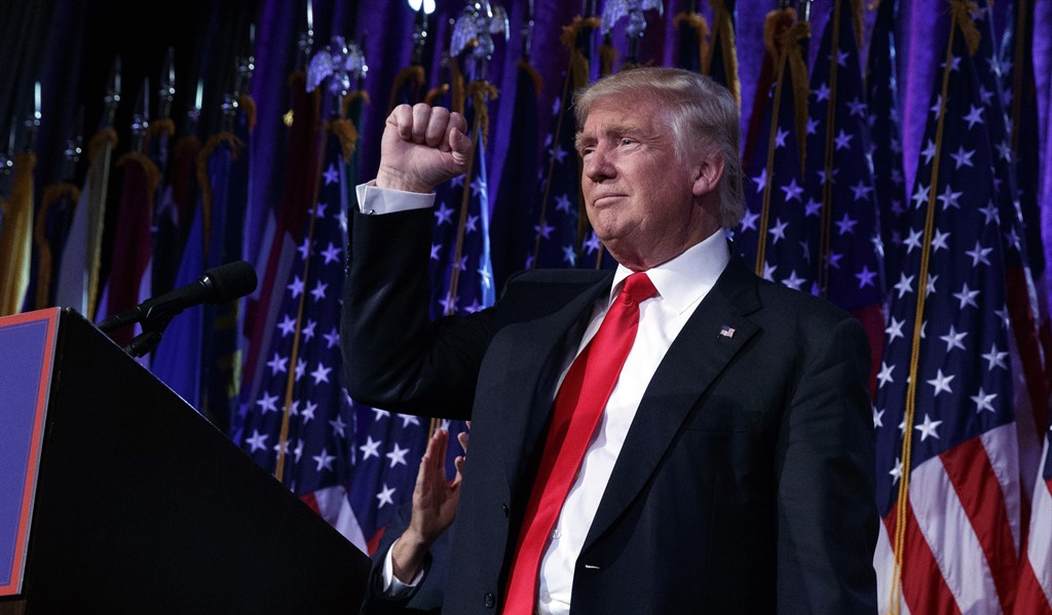

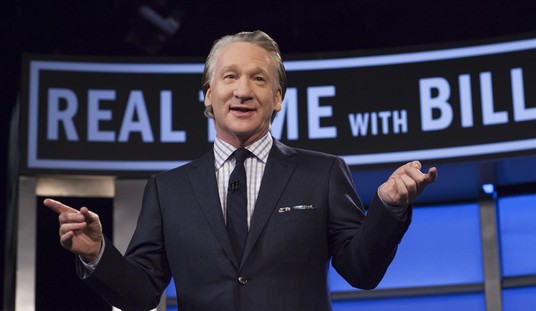


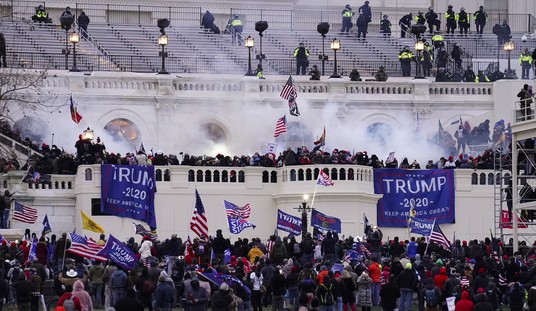
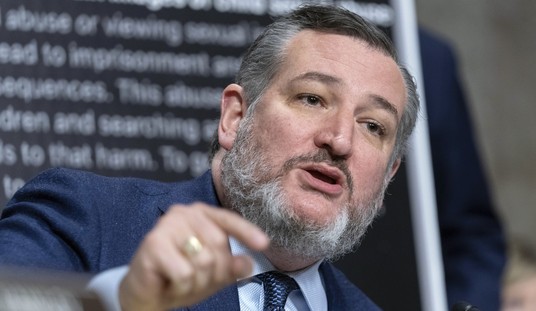
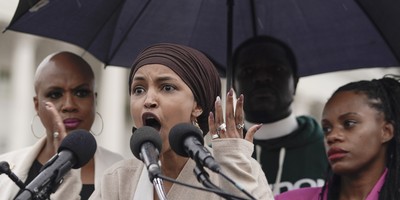
Join the conversation as a VIP Member